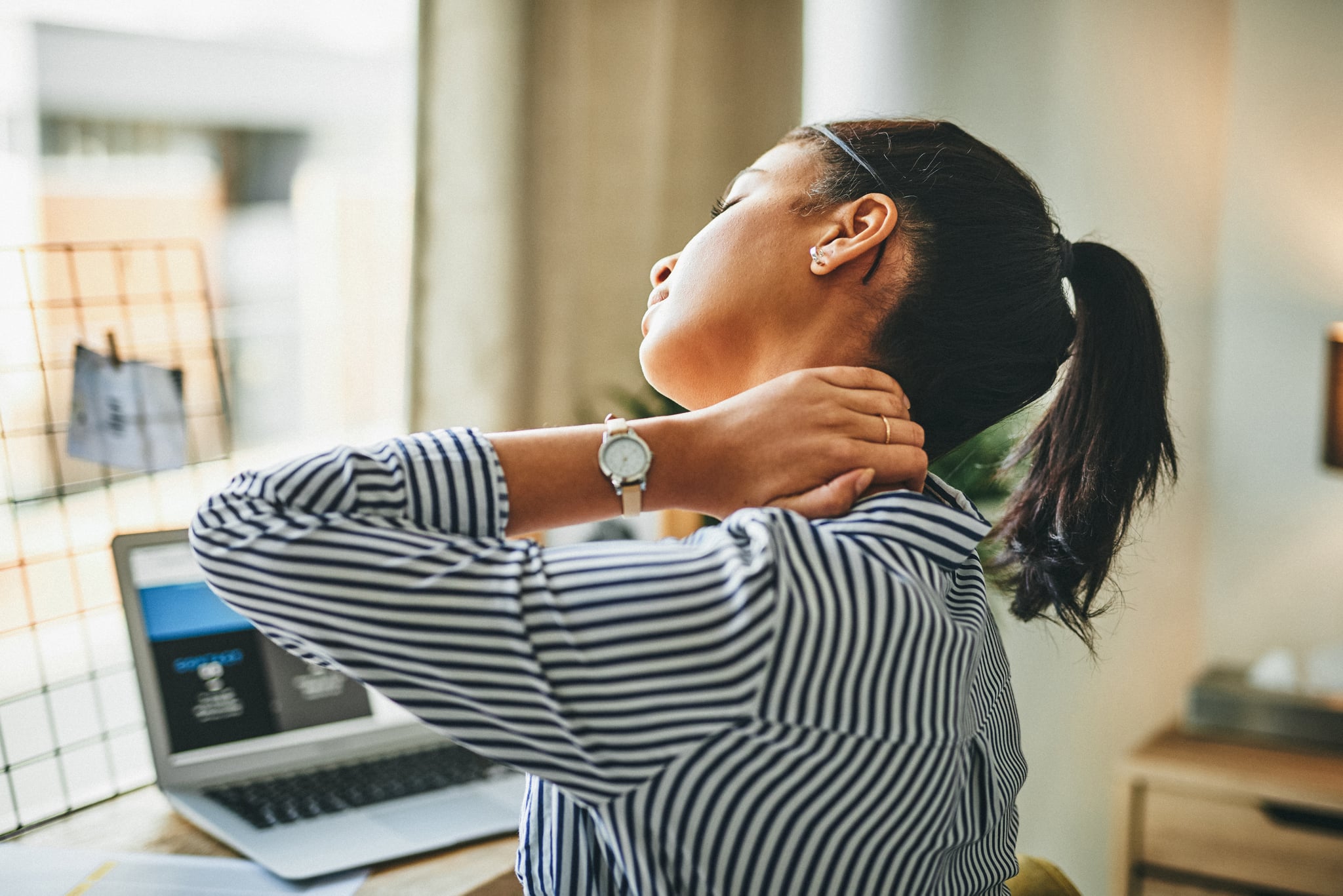
Tension headaches are one of the most common types of headaches, with researchers estimating that up to two in three American adults experience them. Tension headaches are characterized by mild to moderate pain that many describe as feeling like there’s a tight band around their head. Candace Morton, DPT, a physical therapist with ProRehab Physical Therapy in Louisville, KY, explained that the pressure can wrap around your neck as well as your head.
“Often the muscles from the base of your skull, into your neck and mid-back, can become tight or tense, which can lead to these headaches,” Dr. Morton told POPSUGAR. One way to treat tension headaches is to focus on the pressure points that contribute to them.
What Are Pressure Points, and Where Are They Located?
The term “pressure point” derives from acupressure, which is based on the traditional Chinese medicine practice of acupuncture. “Pressure points are areas in the body that, when pressed, may help release tension or restriction,” Michele Renee, DC, M.Ac., an acupuncturist and director of integrative care at Northwestern Health Sciences University, told POPSUGAR.
When it comes to tension headaches, some of the most common spots to find pressure points are the muscles on each side of the spine where they meet the base of the skull; the hollow at the base of the skull; the upper neck to shoulder area; halfway down the back of the calf; and in the web between the thumb and the index finger, explained Tiffany Cruikshank, L.Ac., MAOM, RYT, founder of Yoga Medicine. Cruikshank has two decades of experience using acupressure to treat patients who experience headaches and migraines and added that focusing on these pressure points is “an essential tool for breaking the headache cycle.”
How to Use Pressure Points to Ease Tension Headaches
While persistent headaches may require professional treatment, there are ways to apply pressure to these points yourself. One of the best pressure points to focus on when treating tension headaches is the skin between the thumb and the pointer finger. Dr. Renee recommends massaging this area for 20 to 30 seconds at a time using the thumb and index finger of your opposite hand, or simply pinching and holding it for 10 seconds. Repeat these steps until you feel some relief.
Another at-home method for headache relief is releasing the tension at the pressure points on your head. Dr. Renee explained that one way to do this is by placing two tennis balls in a tube sock, tying it closed, then standing against a wall with the tennis balls resting beneath the base of the skull to gently apply pressure (emphasis on “gently” for this area, which can be sensitive). “The muscles attaching here are often tight; the tennis balls have a little give but help to press and release these tight muscle attachments,” Dr. Renee said.
If tension headaches are a common occurrence, you might consider making an appointment with an acupressurist or acupuncturist. If your insurance doesn’t cover alternative therapies, you could book time with a physical therapist, who may use a method known as trigger point therapy to ease tension.
Typically, when the muscle fibers in your body are at rest, they won’t feel tight. “Trigger points, however, are taut, contracted bands of muscle fibers, when the muscle should be in a relaxed, noncontracted state of rest,” Dr. Morton said. This constant tension can contribute to headaches, while “applying consistent pressure to trigger points can help to release and relax those muscle fibers,” Dr. Morton explained, easing headache pain, too.
